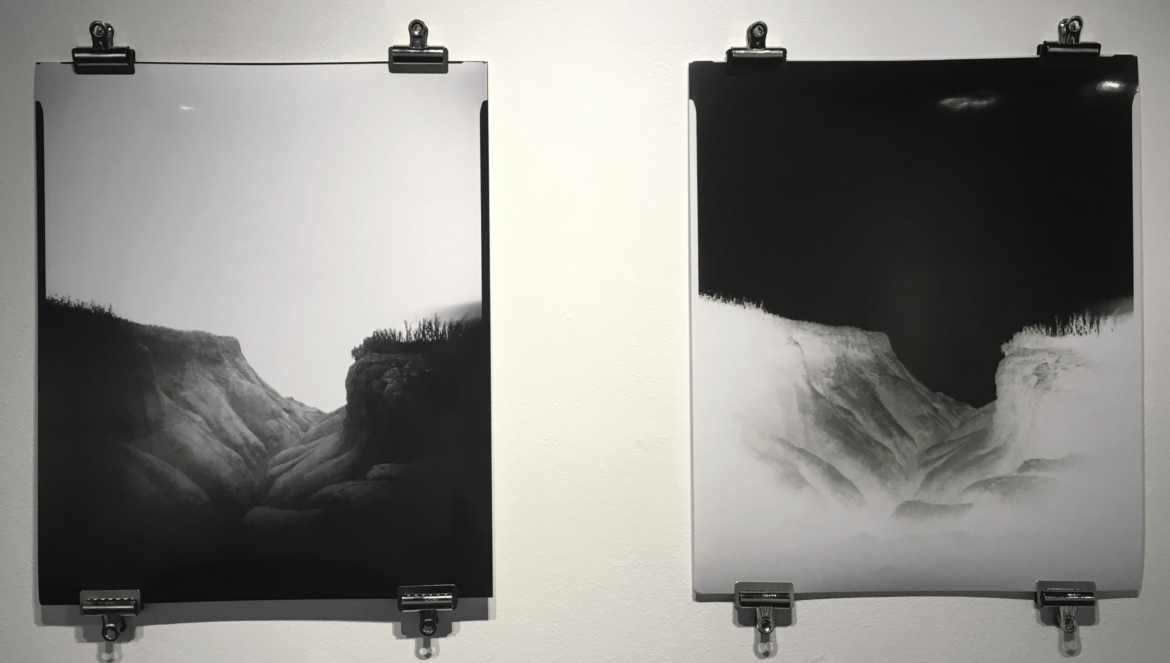Photography group exhibition captures the Marin Headlands at its most multifaceted
By Cristina Schreil
Heading north along Highway 101 just beyond the Golden Gate Bridge is the Marin Headlands, a cliff-fringed swath of natural beauty part of the Golden Gate Recreation Area. Too many in San Francisco only know it as a handy lookout spot — a place to snap an Instagram-worthy pic of the city, with the bridge popping out in the foreground.
This summer, a group of photography students went deeper. Eight students earning their Master’s degrees at Academy of Art University’s School of Photography (PH) used the Headlands as their muse. This lasted an entire immersive summer course, wherein each created a photo series within the confines of one environment, over a compressed period of time. Led by PH instructor Connie Begg for the 15th year, the students explored and captured how there’s more than meets the eye in the Marin Headlands, including a land teeming with diverse wildlife, dotted with abandoned batteries, and acting as a haven to locals and visitors alike.
Via email, Begg explained that the shorter summer semester “encourages students to create a body of work without second-guessing their ideas or changing their projects.” Students would travel up to the Headlands each Tuesday and receive detailed feedback on Fridays. “They go back each week to capture more images and refine their ideas based on the in-depth critiques,” said Begg. “Therefore there isn’t time to second guess their choices.”
The varying approaches of each student on the same prompt, chronicling the same setting, are refreshingly evident in the ensuing exhibition of their best work from the course. Each photographer shined a light on vastly different facets of the same muse. For instance: focusing on the Headlands’ diverse birdlife; capturing a childlike perspective via low angles, and profiling the area’s surfing subculture.
The exhibition, which has been on display at the Academy’s 625 Sutter Gallery through the month of August, features two images per student. A booklet containing students’ statements also displays more information, including their full body of work from the course.
Begg highlighted how interesting each approach is. “Every single year, the student’s work is completely different. The work is uniquely their own based on their own individual interests and sensibilities. This never ceases to amaze me!”
Fiona Cui shot landscapes from Rodeo Beach to Hill 88. She said that sometimes it took her a while of walking before choosing which image to shoot. “I used a low view to imitate a child capturing the scenery by phone,” she wrote in her statement.
In a series titled “the slide to psychosis,” Sophie Darling ruminated on one harrowing concept concerning human’s relationship with nature: “It is said that those who live on a cliff’s edge peering out to nothing but the vast ocean and horizon are to be driven insane.” Darling used an 8 x 10 pinhole camera to evoke “a mental illness and symptoms of psychosis.”
The only photographer to focus specifically on humans, Jeffry Harrison was intrigued by the surf culture of the Marin Headlands. “Perhaps no one has a deeper connection to the Marin Headlands than the group of surf locals,” Harrison shared.
Struck by the sheer peacefulness in observing ocean waves, Sean Hung took an interesting approach on Rodeo Beach: “I used long exposures to show time passing.” He used rocks on the beach as anchor points in this images, which led to a new insight: “No matter how much pressure to the rock, they can withstand,” he said.
Photographing structures and buildings and their aura of mystery, Peter Kyong presented a “strong tension and formal elements to express the contrast of emotions” in “Introspection.”
Like some of his classmates, Stanley C. Phillips described enjoying “the ability to simply sit and be with the land” in his statement. He used a pinhole camera and polaroid film to “produce images that express moments I shared with the land.” Both of Phillips’ images on display featured shorelines.
There’s even a Rorschach-like approach, by Keman Sheng. He explained in his statement that as he sat in the Headlands in a daze, adjusting to life outside of the city, he started to see animals in rock formations, like the child game of looking at clouds. It “encourages people to slow down,” Sheng said. Beside the photos is a small box and a sign inviting people to write down what they see in his photographs.
Shalin Modi snapped wild birds in their habitats, including deserted bunkers and batteries. He ruminated on how they are “the perfect symbol of freedom.” Modi also reflected on how the experience encouraged growth in his craft. “For me, this course was very exciting, as it involved going out in nature or wilderness and showcasing our work from there,” he said. “The short amount of time to complete the project helped me to evolve as a photographer … [it] helped [us] learn quickly from our mistakes and improve from that instead of getting stuck.”
“Muted Oasis” will be on display until August 29, 2019; gallery hours are Monday through Friday, 9 a.m. to 5 p.m.
